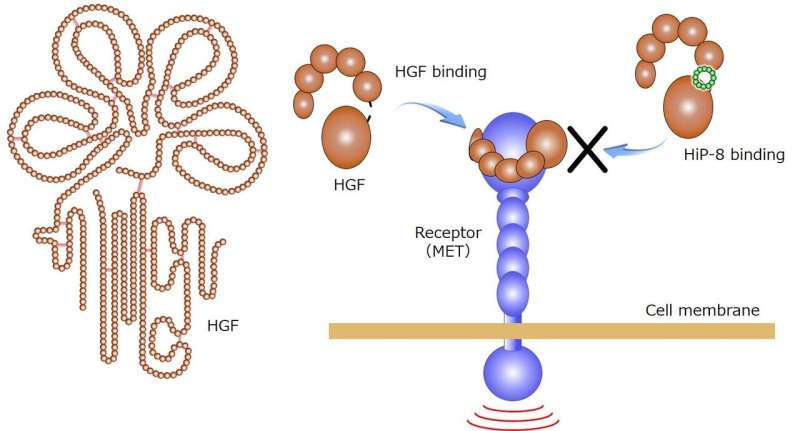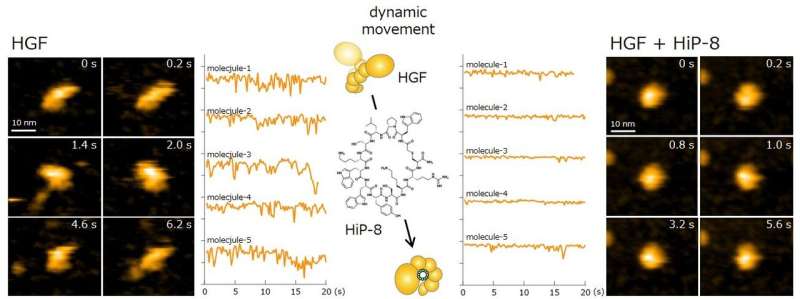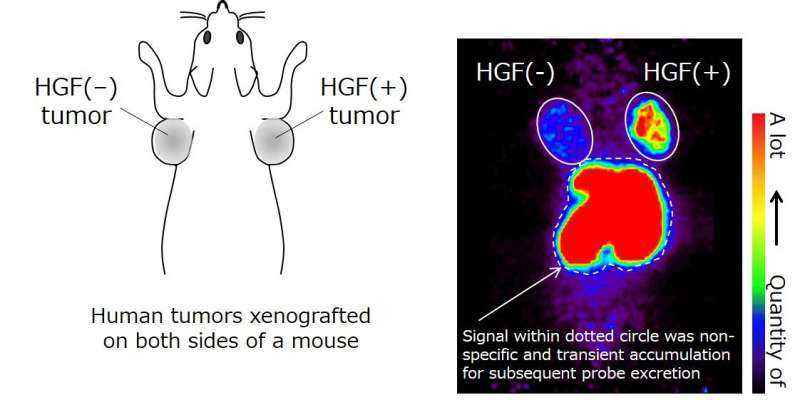HGF-inhibitory macrocyclic peptide—mechanisms and potential cancer theranostics

Hepatocyte Growth Factor (HGF) is a protein that acts as a cell growth factor. By binding to its receptor protein MET on the cell membrane, it exerts its physiological functions such as proliferation and migration of cells, as well as tissue repair and regeneration. For a cancer tissue however, since it promotes invasion and survival of cancer cells, it can play roles in cancer metastasis and acquisition of resistance against anti-cancer drugs. HGF exists in a precursor form, inactive HGF, in various tissues, but the precursor is converted into active HGF only in the vicinity of cancer cells. Because of this reason, molecules that selectively detect/inhibit active HGF are highly desirable but have not been described so far.
Molecular-targeted drugs that selectively inhibit specific molecules have been developed and used for cancer treatment and for other diseases. Among others, antibodies show high specificity to their target molecules, but one of their drawbacks is their very high cost. On the other hand, synthetic drugs are much less expensive since they can be chemically synthesized but their specificity against their target molecules is not high. Recently, much attention has been paid to macrocyclic peptides, which may show target specificity as high as antibodies and yet may be available by chemical synthesis.
The present collaborative research team from five institutions including Kanazawa University successfully discovered a macrocyclic peptide, HiP-8, which binds to the active form of HGF to inhibit its activity, using the PaPID method. HiP-8 is a macrocyclic peptide consisting of 12 amino acid residues in a ring-like geometry (Figure 1), binding to active HGF with a very high affinity and inhibiting HGF binding to its receptor, MET (Figure 1).

In addition, in order to elucidate the functional interaction between HiP-8 and HGF, this study employed high-speed atomic force microscopy (HS-AFM) developed at Kanazawa University, which allows visualization of the dynamics and morphology of biological molecules (Figure 2). This investigation successfully showed that, while an active HGF molecule exhibited dynamic behavior, upon binding of HiP-8, the molecular dynamics of HGF were strongly inhibited. This novel discovery shows that the highly dynamic nature of a protein molecule was inhibited by a small molecule.
Further, image analysis using positron emission tomography (PET) and radio-labeled HiP-8 administered to mice xenografted with human lung cancer tissue, suggest a possible application of HiP-8 to cancer diagnosis. HiP-8 selectively accumulated in cancer tissue with active HGF (Figure 3), suggesting that HiP-8 should be useful as a probe for PET imaging diagnosis. Since HiP-8 inhibits HGF activity, it could also be used as an anti-cancer molecular targeted drug selective for active HGF.
The results of the present study are expected to lead to the development of new PET diagnostic methods with radiotracer HiP-8, a macrocyclic peptide. HiP-8 is a candidate molecule of a new molecular-targeted drug that selectively inhibits only active HGF.

More information: Katsuya Sakai et al, Macrocyclic peptide-based inhibition and imaging of hepatocyte growth factor, Nature Chemical Biology (2019). DOI: 10.1038/s41589-019-0285-7
Journal information: Nature Chemical Biology
Provided by Kanazawa University





















